By James Heinz
The June 6, 1944 World War II Normandy landings have been described as The Longest Day and the Greatest Day of the Greatest Generation. A tugboat floating in the harbor of Kewaunee, Wis., was there on that fateful day.
It is little known that in World War II the U.S. Army commanded almost twice as many ships as the U.S. Navy. Most of the Army’s ships were small harbor craft like the Large Tug LT-4, which was delivered to the Army in October 1943. From the Jacobsen Shipyard in Oyster Bay, New York, it cost $396,400.
photo at top of page and below: Tug LUDINGTON photo by James Heinz

LT-4 is of welded steel construction, 115 feet long, 26 feet wide, and has a 14 foot draft. It is powered by a single 8 cylinder 1,800 horsepower diesel engine. During World War II she was equipped with two 0.50 caliber machine guns and a crew of 24.
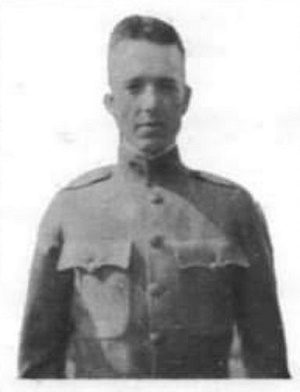
Major Browder courtesy of Find a Grave
In 1944, LT-4 was renamed the MAJOR WILBUR F. BROWDER. The Find A Grave website says that Wilbur Browder was born in 1895. He served in the Army in France in World War I. He remained in the Army, died in 1941 at Walter Reed Army Hospital, and is buried in Arlington National Cemetery.
According to the National Park Service, in 1944 BROWDER crossed the Atlantic under her own power. She was assigned to the 330th Harbor Craft Unit of the Army Transportation Corps.
On June 6, 1944, BROWDER made two trips across the English Channel as part of one of the most important parts of the invasion. She had to turn back the first time because she almost sank in the rough seas. She and 150 other tugs participated in the building of two artificial harbors, code named MULBERRY, on the French coast. BROWDER assisted in towing a large artificial concrete breakwater, code named PHOENIX, across the Channel and placing it in position to provide a sheltered place for Allied supply ships to unload.
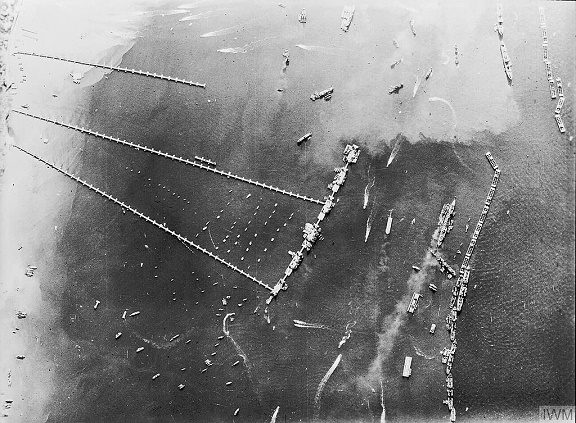
The MULBERRY courtesy of Wikipedia
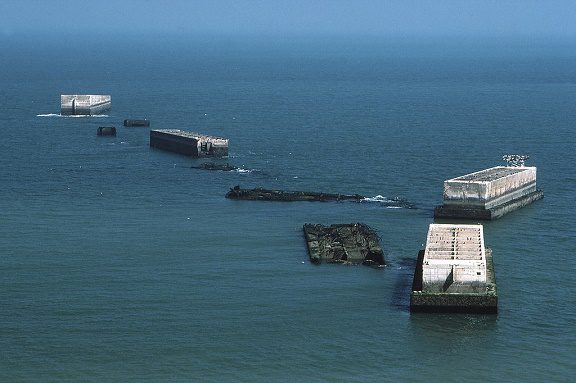
The PHOENIX caissons today courtesy of Wikipedia
For the next month, she towed ammunition barges across the English Channel to keep the Normandy invasion force supplied. She was under enemy fire much of the time and once ran aground on a sandbar when the towing cable got wrapped around her propeller shaft. The tug sat all night stranded at a 45 degree list while the large ammunition barge she was towing whipped back and forth in a strong sea until the tug was freed the next morning.
After the invasion, BROWDER spent the rest of the war towing supply barges across the Channel. She returned to the U.S. after the war. On October 3, 1946, she left Charleston, South Carolina and sailed to Kewaunee, Wis., via the St. Lawrence River and the Welland Canal, arriving November 15, 1946. She was then transferred to the Army Corps of Engineers facility there and was re-named LUDINGTON.
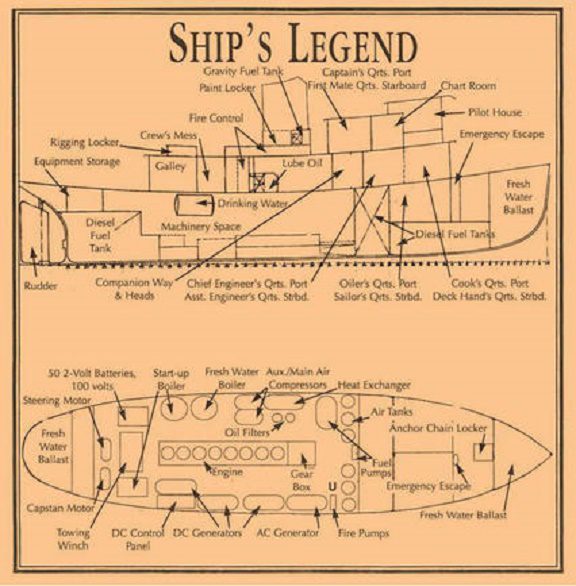
Ship’s Legend courtesy of the City of Kewaunee website
LUDINGTON spent the next 50 years working on Corps of Engineer projects on the Great Lakes, often paired with the dredge KEWAUNEE. Her crew was reduced to 14.
In 1996, she developed trouble with her 53 year old original engine and was sold to the City of Kewaunee for $10,800. In 1998 after refurbishing, she was opened to the public in her Corps of Engineers paint scheme for self-guided tours. She is on the National Registrar of Historic Places.
LUDINGTON is a time capsule since all of her equipment except for refrigerators and a radar set are original equipment. She is a museum of the marine technology of her time and as one of the fewer than 30 of the 6,939 ships that participated in D-Day that are still afloat, a memorial to one of the most important days in history as well.

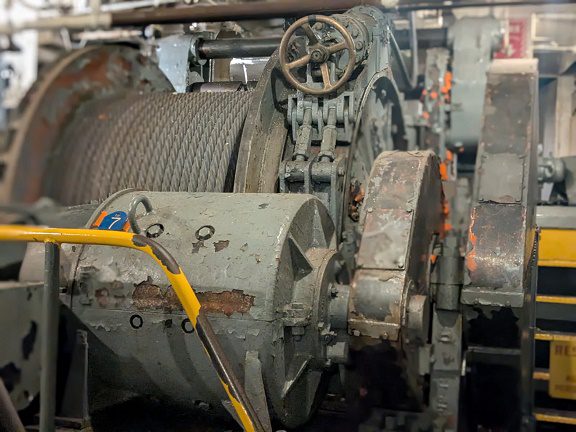
The towing wench
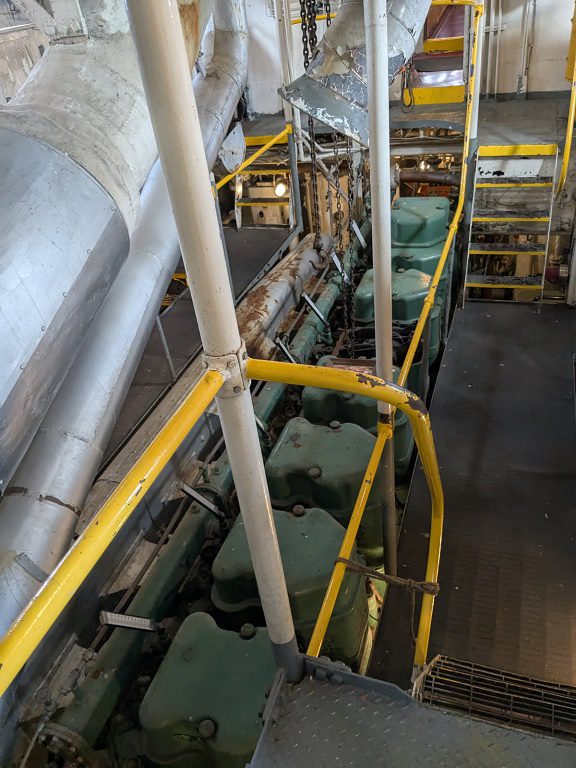
The engine room and the tops of the cylinder heads
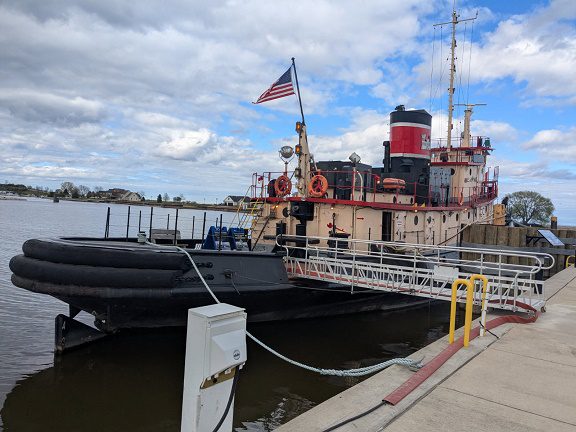
For more interesting reading see – A ship built in Sturgeon Bay, Wis., led the American landing on Utah Beach on D-Day: https://wmhs.org/on-this-day-a-ship-built-in-wisconsin-led-the-normandy-invasion/
Photos by James Heinz unless noted otherwise
——————————–
James Heinz is the Wisconsin Marine Historical Society’s acquisitions director. He became interested in maritime history as a kid watching Jacques Cousteau’s adventures on TV. He was a Great Lakes wreck diver until three episodes of the bends forced him to retire from diving. He was a University of Wisconsin – Milwaukee police officer for thirty years. He regularly flies either a Cessna 152 or 172.

